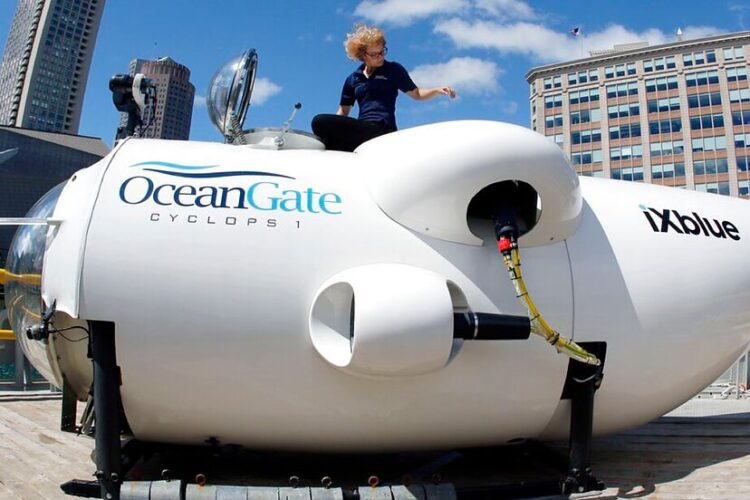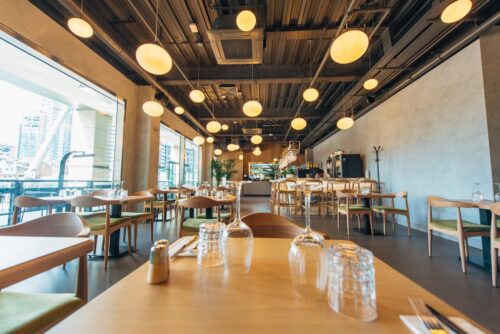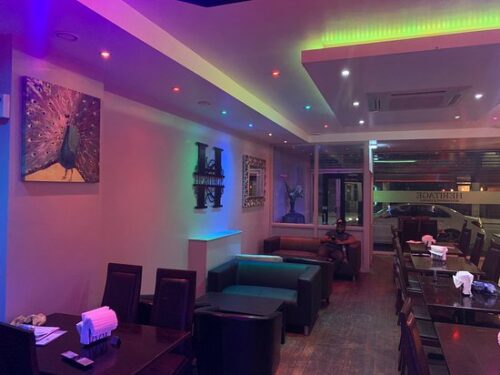By Isabel Wilson-
Disregarding standard ways of building these types of submersible in pursuit of innovation has huge elements of risk and in this case that risk has been realised in the loss of people’s lives.”
Mr Ramsey, who captained nuclear attack submarine HMS Turbulent, gave the frank verdict to Sky News , as he reflected on a disaster that could have been avoided .
He said the the industry will likely tighten regulation and close the possible “loophole” that existed in the case of Titan, adding that lessons needed to be learned, and that questions remained.
OceanGate, which owned the Titan submersible, described those on board were “true explorers” who shared a distinct spirit of adventure, and a deep passion for exploring and protecting the world’s oceans.
However, he highlighted the risks associated with maritime activity
“All maritime activity has risks because the sea is unpredictable,” he said.
“Submarines operate in somewhere less explored than space in something more complex than a spacecraft.”
According to the company that operates the expedition, the passengers who boarded the vessel paid $250,000 to join the crew.
Submarines have long been a crucial component of naval forces, providing stealth, strategic advantage, and the ability to operate covertly in hostile waters. Over the years, advancements in technology and engineering have propelled submarine construction to new heights, resulting in increasingly sophisticated vessels.
Rigorous Testing
Standard ways of building submarines have evolved through rigorous testing, meticulous design principles, and accumulated experience. Deviating from these standards in the pursuit of innovation can lead to unforeseen safety compromises and design flaws. When critical aspects of construction are disregarded, the overall structural integrity of the submarine may be compromised, increasing the risk of catastrophic failures.
One such danger lies in the structural stability of the submarine. Established construction practices ensure that submarines can withstand immense pressure.
Ignoring standard principles can make a submarine vulnerable to structural deformities, leaks, and even implosions. Inadequate pressure hulls, substandard materials, or untested design features can expose the submarine and its crew to unimaginable risks.
Moreover, neglecting established methods of buoyancy control and ballast systems can have grave consequences. These systems are known to play a vital role in maintaining the submarine’s depth and stability. Inadequate buoyancy control mechanisms can result in uncontrollable ascent or descent, leading to collisions with the seafloor or even breaking the surface, thereby compromising stealth capabilities and endangering the crew’s lives.
Standard submarine construction practices prioritize reliability, ensuring that the vessel can endure the harshest conditions and extended missions. Innovations that disregard these practices may introduce untested technologies or unproven concepts, leading to potential operational risks.
One significant concern is the integration of unproven propulsion systems or power sources. Reliable and proven systems are critical for maintaining a submarine’s mobility and ensuring its ability to surface safely in emergency situations. Neglecting standard practices may result in propulsion failures, power outages, or even catastrophic accidents, leaving the submarine stranded or at the mercy of hostile environments.
Another aspect affected by the disregard for standard construction methods is the effectiveness of crucial systems such as navigation, communication, and life support. Innovations that are not adequately tested may be prone to malfunctions, rendering the submarine vulnerable to navigational errors, loss of situational awareness, or difficulties in communication. In extreme cases, a loss of life support systems due to design flaws can be fatal, trapping crew members underwater without a means of survival.
Untested Innovations
If a submarine built with non-standard methods or untested innovations is lost at sea, the challenges associated with search and rescue operations become significantly magnified. The unfamiliarity of the vessel’s construction, unconventional design features, or lack of standardized emergency procedures complicates rescue efforts.
Traditional rescue techniques and equipment may prove ineffective in such situations, as they are designed with standard submarines in mind. The specialized knowledge, tools, and infrastructure required to handle unconventional vessels can significantly delay rescue operations, reducing the chances of successfully retrieving crew members and increasing the risks they face.
The unique construction and unfamiliarity of non-standard submarines can hinder communication between the distressed vessel and the rescue team. Submarines lost at sea may lack the necessary signalling capabilities or possess unconventional communication systems, making it challenging to establish contact .




